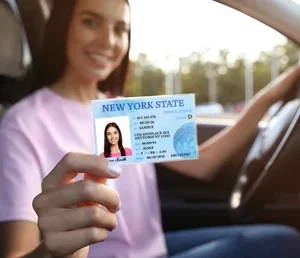Congress pushed the REAL ID Act through in 2005 after the 9/11 Commission laid down the law. This isn’t just another ID—they’ve cranked up the security to a whole new level. We’re talking anti-counterfeiting tech, insider-proofing, and hardcore document checks to make damn sure you are who you say you are. Come May 7, 2025, if you’re 18 or older and want to get on a plane, you’d better have a REAL ID-compliant license, an enhanced driver’s license, or some other TSA-approved ID. No exceptions.
Every U.S. state, D.C., and most U.S. territories are on board, rolling out these tougher-than-nails IDs. This isn’t just bureaucracy—it’s about making sure state-issued IDs are the real deal, and you’re not getting anywhere near an airport without one.
“The REAL ID Act’s security requirements are a game-changer for tightening up aviation security,” the TSA threw down in a press release. “REAL ID is less than a year away—time to get your act together.” TSA’s been flashing signs in every airport since April, and now their agents are giving travelers with non-compliant licenses a heads-up that the clock is ticking.
Getting your license still means heading down to the Deputy Registrar at your local BMV, but here’s the kicker—you’ll need to bring extra documents to prove you are who you say you are if you want that REAL ID.
One major change? You’re not walking out of there with your new license in hand anymore. Instead, it’s getting shipped straight to you, cutting down on fraud and identity theft since the cards are cranked out in a high-security print facility. Expect it to hit your mailbox in 7-10 business days, according to the BMV.
If you’re in Ohio and gearing up for that REAL ID, the BMV’s got all the info you need on their website (www.bmv.ohio.gov). But here’s the deal—you’ll need to bring the right documents to prove:
- Your full legal name
- Date of birth
- Social Security number
- Proof of Ohio residency
- Proof of legal presence in the U.S. You’ll need FOUR original “source documents” to back this up. First, you’ll need either a certified or original birth certificate or a current U.S. passport—these prove your full legal name, U.S. citizenship, and date of birth. Then, you’ve got to show your Social Security number (think SS card, W-2, or 1099). Finally, you need TWO pieces of written proof of where you live right now (bank statement, utility bill, IRS tax return—anything with your name on it). The BMV is going to scan all these into their system. Heads-up for married women, couples who changed their names, or anyone who’s been married and divorced—make sure you’ve got certified copies of all marriage licenses and divorce decrees showing how your name has changed, OR just show your U.S. passport with your current name on it.
If you’re thinking about sticking with a standard driver’s license or ID instead of upgrading to a REAL ID, keep this in mind: while it won’t demand the same mountain of paperwork, it also won’t get you on a plane, into a military base, or most federal buildings without a passport or some other extra ID.
Both the standard and REAL ID-compliant cards will work just fine for everyday things like buying booze, registering to vote, and accessing social services. But come 2025, if you plan on flying domestically, that standard ID won’t cut it—REAL ID is the only way to meet the national travel security requirements.
When you’re at the BMV getting your REAL ID, make sure to double-check every detail on the card before you leave—especially your endorsements, like that ‘M’ for Motorcycle or any CDL certifications. And here’s a new perk: if you bring in your DD214 or VA card, they’ll add your military service right on the face of your license, which can be handy for snagging veterans’ discounts and more.
Some folks argue that the REAL ID Act is just the government’s way of sneaking in a “national ID card” system, which they see as a blatant violation of the constitutional right to privacy. The Department of Homeland Security fires back, claiming the law is just about setting national standards. Since the states still handle issuing the cards and keeping the databases, they insist this isn’t a “national ID” system.
But plenty of advocacy groups and opponents aren’t buying it. They worry that a REAL ID- compliant license could become mandatory for all sorts of basic activities—voting, accessing social services, opening a bank account, buying a gun, or any number of commercial and financial transactions. To them, it’s basically a national ID in disguise.
DHS, in its final rule on the REAL ID Act, addressed these constitutional concerns head-on. They outright reject the idea that implementing REAL ID will trample on anyone’s individual rights, arguing that the fears are overblown and unfounded.
Despite DHS’s reassurances, privacy rights advocates are still raising hell over the REAL ID Act. They argue that by creating a national system that electronically stores loads of personal data, the Act opens the door wide for identity theft. The more data floating around in a system like that, the easier it is for someone to steal it.
The DHS, however, fires back, saying the Act’s built-in security measures, like strict handling of personal data and tighter screening of DMV workers, are enough to keep that data safe and out of the wrong hands.
But here’s the bottom line: the REAL ID Act is now the law, with a go-live date of May 7, 2025. You’re not forced to comply—unless you want to fly or visit a federal facility. For now, at least.
– Camille











